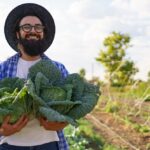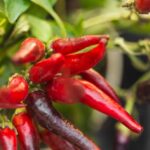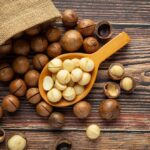Oregano (Origanum vulgare) is a popular herb with a robust flavor, commonly used in Mediterranean cuisine. Growing oregano can be a profitable venture for South African farmers, given its culinary and medicinal value. This article outlines the complete process of growing oregano, from seed to harvest, including inputs, machinery, potential diseases, and best practices for storage.
1. Land Preparation
Before planting oregano, proper land preparation is crucial:
- Soil Type: Oregano thrives in well-drained, sandy loam to clay loam soils with a pH of 6.0 to 7.0. Conduct a soil test to determine nutrient levels and pH.
- Land Preparation: Clear the land of debris, rocks, and weeds. Use a plow or rototiller to loosen the soil to a depth of 15-30 cm. Incorporate organic matter, such as compost or well-rotted manure, to improve soil structure and fertility.
2. Sowing Seeds
Seed Selection: Choose high-quality oregano seeds from reputable suppliers. Common varieties include Greek oregano and Italian oregano.
Sowing Method:
- Direct Sowing: Sow seeds directly into the prepared soil in early spring (September to October in South Africa). Space seeds 30 cm apart in rows 45-60 cm apart.
- Indoor Seedling Start: Alternatively, start seeds indoors 6-8 weeks before the last frost. Use seedling trays filled with seed-starting mix, and keep them in a warm, well-lit area.
Germination: Oregano seeds typically germinate in 7-14 days under optimal conditions (20-25°C). Keep the soil moist but not waterlogged during this period.
3. Seedling Care
Once seedlings have emerged:
- Thinning: Thin seedlings to 15-20 cm apart to allow proper air circulation and growth.
- Watering: Water regularly, ensuring the soil remains consistently moist. Oregano prefers moderate moisture and should not be overwatered to prevent root rot.
4. Fertilization
Oregano requires balanced fertilization for optimal growth:
- Fertilizers: Apply a balanced fertilizer (N-P-K ratio of 10-10-10) at planting and then again every 6-8 weeks during the growing season. Organic options include compost tea or fish emulsion.
- Soil Amendments: Adding a layer of mulch (e.g., straw or wood chips) can help retain moisture and suppress weeds while gradually enriching the soil as it decomposes.
5. Pest and Disease Management
Be vigilant for common pests and diseases that may affect oregano:
- Pests: Watch for aphids, spider mites, and whiteflies. Use insecticidal soap or neem oil as a natural pesticide if infestations occur.
- Diseases: Oregano can be susceptible to powdery mildew and root rot, especially in overly moist conditions. Ensure proper spacing and airflow between plants to reduce humidity. Use fungicides if necessary, following the manufacturer’s instructions.
6. Watering Requirements
- Frequency: Water oregano deeply but infrequently. It typically requires 2.5-5 cm of water per week, depending on weather conditions. Allow the top inch of soil to dry out between waterings to prevent root rot.
- Irrigation: Consider drip irrigation for efficient watering, especially during dry spells, to ensure moisture reaches the root zone without wetting the foliage.
7. Harvesting
Oregano is ready for harvest when the plants are well-established and have multiple stems (about 8-10 weeks after sowing):
- Harvesting Method: Use garden shears or scissors to cut the stems 2-3 cm above the ground. This encourages new growth and allows the plant to thrive.
- Timing: The best time to harvest is in the morning after the dew has dried but before the sun becomes too hot. This timing helps preserve the essential oils that give oregano its flavor.
8. Storage
Proper storage is crucial for maintaining the quality of harvested oregano:
- Drying: Hang harvested oregano bundles upside down in a warm, dry, and dark place. Once the leaves are completely dry, remove them from the stems.
- Storage Containers: Store dried oregano in airtight containers away from direct sunlight to maintain flavor. Glass jars or vacuum-sealed bags work well.
Growing oregano from seed to harvest can be a rewarding endeavor for South African farmers. By following the outlined stages—land preparation, sowing, care, pest management, and harvesting—you can successfully cultivate this valuable herb. With proper care and management, oregano can thrive in your fields, offering both culinary and economic benefits.








